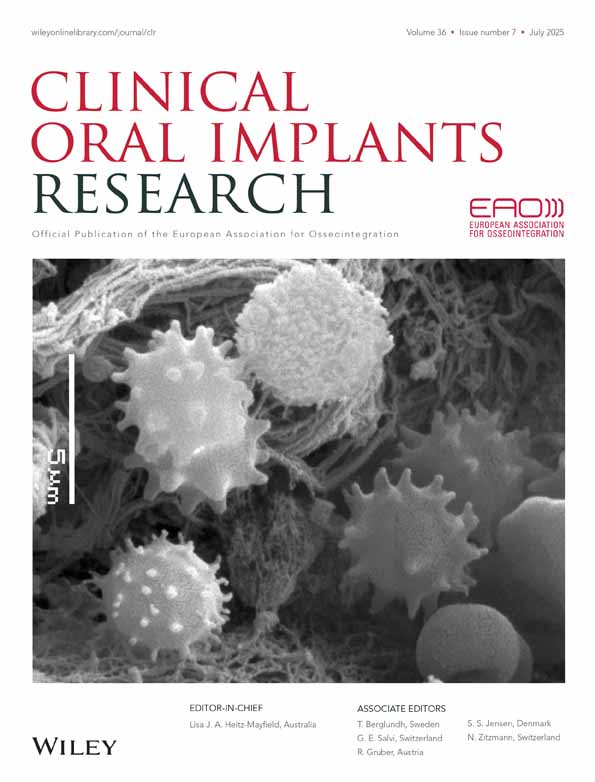Long-term stability of jaw bone tuberosities formed by “guided tissue regeneration”
Abstract
The aim of the present study was to evaluate whether bone tuberosities produced by GTR on the lateral surface of the mandibular ramus in rats are stable on a long-term basis. Thirty male 6-month-old albino rats of the Wistar strain were used in the study. Tissue flaps were elevated on the lateral aspect of the mandibular ramus. The periosteum was preserved (P+) on one side of the jaw while the bone was denuded (P−) on the other. A rigid, non-porous oval-shaped teflon capsule was placed on both sides with its opening facing the ramus. Six months following surgery, 10 rats were sacrificed and prepared for histology while the remaining 20 rats were subjected to a second operation during which the capsules were removed. Standardized radiographs, taken immediately before and after removal of the capsule and after 3, 6, 9 and 12 months, were subjected to planimetric measurements and subtraction radiography. Ten animals were sacrificed and prepared for histological analysis after 6 months following removal of the capsules and the remaining 10 animals after 12 months. Histology revealed that at 6 months after the placement of the capsules, 17 were completely filled with new bone. The remaining 3 capsules which were displaced exhibited only partial bone fill. The radiographic analysis revealed that after 6 months 98.6±7.6%(mean±SD) in average of the cross-sectional area created by the capsules was filled with new bone. Within 3 months after removal of the capsules a slight resorption of the new bone had occurred, thereby reducing the area of the bone tuberosities by 4 to 8%. No further resorption of the bone tuberosities took place from 3 to 12 months. These observations indicating that new bone produced by GTR is stable on a long-term basis, may question the general belief that non-functional bone will resorb over time.




